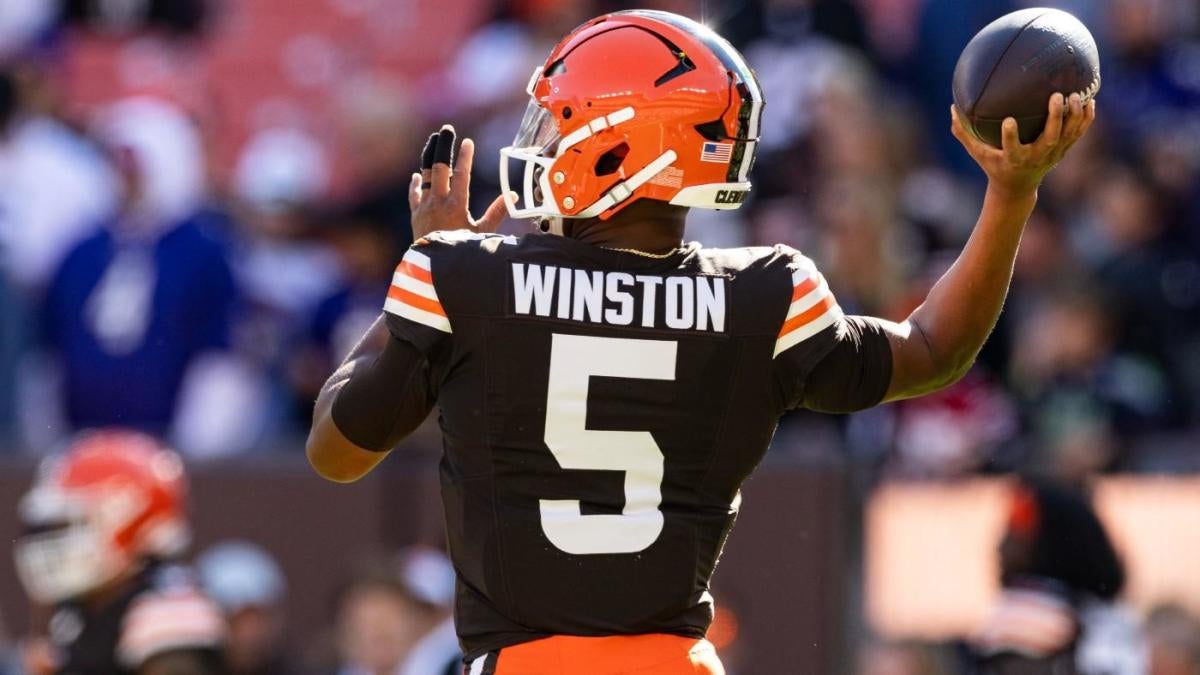
Jim “Hoss” Brock was a larger-than-life figure. The hard-charging, back-slapping, cigar-chomping former Cotton Bowl executive ruled with a charm unrivaled.
Back in the day when college football bowl games were more like arranged marriages, Ol’ Hoss had superpowers lined up for his game by Halloween. Brock once “recruited” Notre Dame by opening a bar tab reserved for the school’s seniors in South Bend, Indiana.
When it was suggested that lasting until a 3 a.m. last call might have rankled the Cotton Bowl executive committee, Hoss once told Sports Illustrated, “Ain’t but 2 a.m. Dallas time.”
Hoss endeared himself by calling everyone “Hoss” — that cut down on him having to remember names — and keeping the Cotton Bowl relevant. He specialized in landing Heisman Trophy winners, convincing the winners’ schools to come to Dallas three times in a four-year period from 1984-87.
Hoss Brock, gone since 2008, would have turned over in his grave Saturday.
He wouldn’t recognize the current bowl landscape he once ruled. Marshall — Sun Belt champions, mind you – opted out of its Independence Bowl game with Army on Saturday. Not enough players to field a team, the school said. Too many players in the transfer portal. Sources told CBS Sports the Thundering Herd were down to 45-48 players on the roster.
Marshall was well within its rights. Players on teams that lose their coach in the offseason are allowed a 30-day window to transfer. Add that on top of the existing portal window that is open for everyone through Dec. 28.
It was already strange enough that coach Charles Huff had left the champion Thundering Herd to take the Southern Miss job. The last-place Golden Eagles were winless in conference play this season.
A trend has been developing for a while now. Two years ago, an LSU team in transition from Ed Orgeron to Brian Kelly took less than 40 scholarship players to play Kansas State in the Texas Bowl. The result was predictable; LSU lost by 18 with a wide receiver playing quarterback.
Last season, Florida State elected to play Georgia in the Orange Bowl despite missing 30-plus players due to injuries and defections. The Bulldogs won 63-3, marking the largest margin of victory in bowl history.
“They need to fix this,” Georgia coach Kirby Smart declared.
But until then, and unless collective bargaining is adopted to rectify things at some point, there is a growing school of thought that the entire bowl season must be “re-imagined.”
That’s kind of the new catchphrase for a bloated bowl structure that is struggling for eyeballs and funding. Almost everything is on the table to turn things around: incentivizing players to participate with bowl revenue, doing away with conference affiliations to create better matchups and even setting a cut line at a minimum of a 6-6 record for bowl eligibility.
The Independence Bowl was bailed out only because Louisiana Tech agreed to replace Marshall. The Bulldogs were reportedly 16th on a list of 17 5-7 teams that were eligible due to the NCAA’s graduation rate requirement. It also helped that Tech is on the quarter system and players are still in school.
All of it qualifies as an ongoing five-alarm postseason emergency. The only thing worse than Marshall opting out would have been the Independence having to go dark without a replacement.
“What we’re seeing, without a doubt at this time of year, is the structure around college and that needs to be fixed,” said Nick Carparelli, the executive director of Bowl Season.
“It’s not a problem unique to bowl season, it’s affecting all of college football.”
Getty Images
Aside from the Marshall debacle, this bowl season is actually looking promising.
Colorado’s stars, including Heisman Trophy winner Travis Hunter and QB Shedeur Sanders, announced long ago they were playing in what turned out to be and Alamo Bowl showdown against fellow Big 12 team BYU.
Miami quarterback Cam Ward is participating in the Pop-Tarts Bowl against Iowa State.
Ole Miss’ Jaxson Dart (Gator Bowl) and Syracuse’s Kyle McCord (Holiday Bowl) are also playing.
That doesn’t mean things aren’t broken.
“It’s not publicly known,” Carparelli said. “But I’m pretty confident that a lot of the NIL deals in place this year include playing in bowl games. I’m encouraged to see a lot of big time players opting to play in bowl games.”
And maybe it’s as simple as that. Companies and/or schools make it a condition of compensation that players participate in bowl games. A lot more money is entering the system with revenue sharing set to go online July 1.
But we still live in a time where there is little structure. One day soon, such NFL prospects may opt out of the playoff itself. That nagging thought has to be in the back of CFP executives’ minds.
“I don’t think there will be opt out in the playoff,” Ohio State defensive back Caleb Downs told CBS Sports. “There will be really no point to play in the regular season if you are not going to play at a high level for your team. The playoff is really what we work toward every season.”
Well, that’s until parents or an agent or a giant Hollywood marketing firm get involved and whisper: What would you rather do, get $60 million guaranteed as a first-round payday or risk tweaking a knee?
Insurance just isn’t going to cover career-ending injuries.
So far, the prospect of playoff opt outs has been pushed aside. But the CFP is likely to expand to at least 14 teams in 2026, meaning more games, more money and perhaps more upheaval. You think not? We just saw a 72-year-old with six Super Bowls to his credit, Bill Belichick, suddenly take an interest in recruiting 18-year-olds.
That’s a sign that the game itself is opening up to opportunities. College football continues to be undervalued by at least half, according to Casey Wasserman, a powerful sports and entertainment executive who helped bring the 2028 Summer Olympics to Los Angeles.
That doesn’t exactly address the current state of bowl relevancy. The 12-team playoff has cut further into bowl congruence. The playoff now lasts an entire month, so the bowls are increasingly being shoved to the side.
Still, the bowls continue to be a programming staple. If 40-something bowl games can do a minimum of 1 million viewers, well, that’s better than the alternative of watching bowling or ax throwing in December.
But college basketball has already re-imagined part of its game. The MTEs — multiple-team events – are undergoing change. Earlier this year, CBS Sports broke the story of the Players Era Festival debuting during Thanksgiving week. Eight teams each received $1 million in exchange for their name, image and likeness rights.
“I’ll be interested to see what we do with bowl payouts,” Carparelli said. “I’ve kept a careful eye on all these basketball events. Bowl games suffer a little bit from the fact we’ve been around for so long … it’s hard to change. But if the conferences decide that a portion of the payouts should go directly to the players, bowls are going to be excited to do that.”
Doing away with some of those conference affiliations could enhance matchups as well. Things are so convoluted now that Colorado is still part of the Pac-12 bowl rotation. You might remember the Pac-12 died as a viable conference in August 2023. The Buffaloes just completed their first season back in the Big 12 for a second stint as conference member.
“We’ve been floating around the idea the last year or so there should be a lot more flexibility for the bowl selections, if possible, moving forward,” Carparelli said.
It would be nice, for example, if No. 22 Army, at 11-1, could have played another ranked team in its bowl.
We’ll see how far that thinking goes. The SEC landed 13 teams in the postseason — three in the College Football Playoff and 10 in traditional bowl games.
The issue is, by and large, college football doesn’t have a working model. It’s an every-man-for-himself money grab. The adults in the room certainly don’t set an example. Coaches who have the freedom to job hop are hypocrites when they complain about the portal.
Commissioners just want more playoff spots, more bowl tie-ins, more media rights revenue. We are witnessing the literal transition of (some) power from those executives to players.
So when something like the Pop-Tarts Bowl emerges, it is almost by mistake. Who among us ever thought a bowl featuring an edible breakfast pastry mascot would be a hit?
A game in the Caribbean, the Bahamas Bowl, might seem far-fetched, but in its history, the game has averaged a solid 12,000-13,000 in attendance. That’s 12,000-13,000 tourists that might not be in the country if not for football.
A lot of money is about to hit this undervalued game between revenue sharing and private equity investment. The College Student Football League and Project Rudy want a piece, too. Collectives don’t seem like they’re going away. The power brokers in the SEC and Big Ten are willing to do just about anything to increase revenue.
“There’s always more juice to squeeze in the sponsorship world,” said Steve Hogan, past chairman of the Football Bowl Association and current CEO of the Citrus and Camping World bowls. “They’re not squeezing all of it right now.”
Meanwhile, bowls and their host cities still rely on antiquated revenue streams like attendance and television. It may be that a portion of the 41 traditional (non-playoff) bowls go dark. Not everyone can prosper.
“Everything feels paralyzed by the outcomes of the [court] cases,” Hogan added.
That’s a reference to the July 1 date circled on everyone’s college calendar these days. That’s the day revenue sharing begins in the House v. NCAA case, and schools that opt in can immediately start distributing $20 million in the first authorized pay-for-play college system.
Perhaps less is more in this discussion. Hogan is among those who would like to see 6-6 or 7-5 be a minimum standard for bowl eligibility. As the number of bowls increased the standard for bowl eligibility had to decline. Eventually, if the NCAA decided if there weren’t enough eligible bowls, 5–7 teams would be considered.
That’s how we got to Saturday when, by all accounts, Louisiana Tech was thrilled to take a bus ride to go bowling. The Independence Bowl in Shreveport is 70 miles from the Tech campus in Ruston.
If all of it seems watered down, get on board. There was a time in 1978 there were only 15 bowls. That was a season before Hoss Brock took over the Cotton Bowl.
Arranging bowls was big business. In 1987, NBC and Fiesta Bowl combined to match No. 1 Miami against No. 2 Penn State. That opened doors and minds on how much revenue could be unlocked in what eventually became today’s playoff.
If the current bowl system is deregulated, there may be more arranging to do. Who wouldn’t want to see the bowl freedom that would allow Miami play Alabama in a given year or the Heisman winner be compensated enough to make an appearance?
Hoss would love that kind of matchmaking. Too bad he’s not here to witness the new bowl landscape.
He might even buy you a drink.




